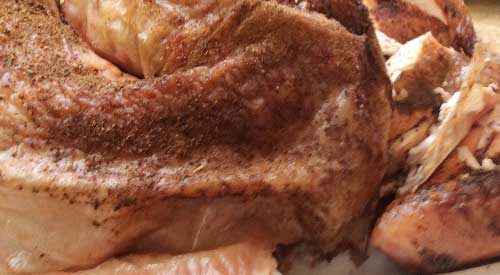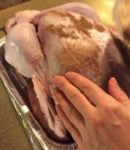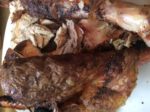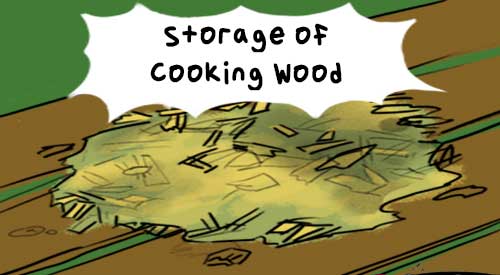 |
| You can do it! Stove top smoked butternut squash! |
It’s squash season and that means you have a tremendous variety of product available to do many styles of cooking. How about trying your hand at stovetop smoking? Today, I’m featuring the very popular butternut squash. You’ll need a stovetop smoker or a cast iron skillet or Dutch oven with an insert pan and lid, Minuto Chips® in Size #4 from SmokinLicious®, and about 1 hour of time. Be sure you also have a hood vent where you will be using the stovetop smoker. Now let’s gather our ingredients and get ready to infuse great wood-fired flavor!
Ingredients- Smoked Butternut Squash
I’ve decided to add a little spice to this smoked butternut squash so here are the ingredients you will need to do this flavor:
- Curry powder
- Cinnamon
- Unsalted butter
- Coarse salt
- Fresh pepper
- And 1 medium-size butternut squash
Cast iron does take a bit of time to heat up, so you can start the medium-high heat under the stove top unit made of cast iron as you are preparing the squash, so by the time you have everything cut, cleaned and seasoned, the smoking pan will be ready to go.

Smoked Butternut Squash- Preparation
In addition to the food ingredients, you’ll also need a small saucepan for melting the butter or you may use a microwave safe bowl and melt the butter in that manner. A chef’s knife, cutting board, and vegetable peeler are also needed. First, I cut both ends of the squash off so that I have two flat ends to work with. I then peel all the skin and white skin beneath the peel from the squash until the yellow/orange meat is revealed.
Once all the peel and white skin are removed, I cut the squash in half lengthwise revealing the seeded inside. With a spoon, I remove the seeds and membrane strings. I like to pat the squash dry with a few paper towels to remove the excess water as once this vegetable hits the heat, it will start to steam out the water held in the cell membranes. Now, we’re ready to start slicing the squash into ½” slices. Taking each half, I like it on the flat side on a cutting board and slice into ½” pieces. I add these to a bowl in preparation for the flavor ingredients.
Spicing Things Up
Now it’s time to add the spices to these beautiful slices. I take about a tablespoon of cinnamon, 1-2 teaspoons of curry powder, a ½ teaspoon of coarse salt and ¼ teaspoon of fresh ground pepper. I then melt 3 tablespoons of unsalted butter. Be sure you simply melt the butter and do not let it go to the brown stage. I then pour the melted butter over my spiced butternut squash slices and mix well. I like to do this part with my hands to ensure everything is mixed well. Now, we are ready to get these beauties on the grill grate of our pre-heated stovetop smoker.

Stove Top Pan Preparation
Be sure your smoker base pan is clean of any previous wood chips or food scraps. Add the SmokinLicious® Minuto® Wood Chips in the base of the unit, about a handful is needed. I’m using Sugar Maple Minuto® Chips in Size #4 to bring a balance to the squash with my other flavor ingredients. Because I plan to use my smoked squash as an ingredient in other recipes, and squash has a large amount of water naturally in it, I’m using the stovetop smoker unit without soaking my chips. This is commonly how stovetop smokers are used as the chips will combust easier in the dry state and provide perfect smoke infusion. I also make sure to turn my hood vent “on” to help reduce the smoke aroma.

Smoking
I gently lay each squash section on the grill pan doing the best I can to keep everything from being too crowded. A medium sized squash will fill the pan easily. I then cover the pan and let it cook for about 20 minutes without lifting the lid. Remember, squash contains 94% water weight so once you lift the lid to check the squash slices, you will see the accumulated condensation on the inside of the lid. Do the best you can not to allow the water to pool into the lid and go back into the smoking pan.
You will see the squash slices take on a shiny appearance and soften from the water vaporization and smoke vapor infusion. Depending on what you will use the squash slices for – using them as is as a side dish or in another recipe such as a soup, pureed side dish or even a sauce – will determine how long and how tender they need to be. I like mine to be knife tender but not to the point where they fall apart if picked up with tongs. Notice the condition of my Minuto® wood chips when I finish – perfectly carbonized. In fact, I likely could use them for another batch of squash!

The Finish- Smoked Butternut Squash
With just a handful of Minuto® wood chips in size #4, 1 medium butternut squash, and 1 hour of time, I produced golden, rich flavor with a gently touch of smokiness. Notice the grill marks I still achieved by not fussing with my squash. Using cast iron units allow you peace of mind in knowing the chips are safe so you can walk away and not open the lid. That allows that 94% water to vaporize and give gently crusting to the squash. I’m ready now to take these slices into a recipe that will be extra special and memorable. Find out for yourself how easy it is to smoke on the stove top smoked butternut Squash
Bon Bar B Que!









